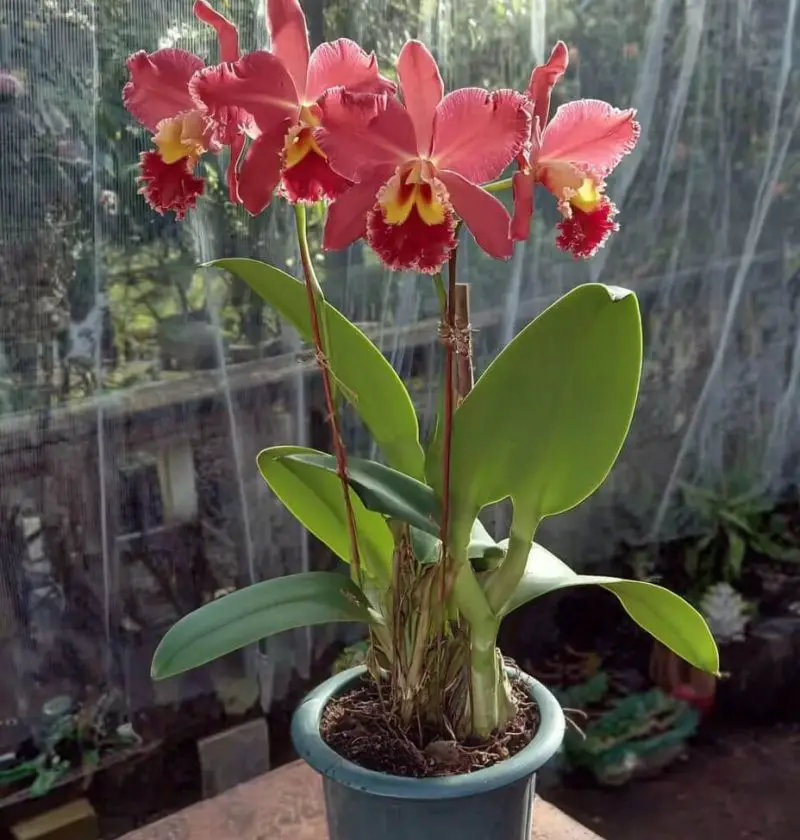Save This Recipe
I’ll be honest — the first orchid I ever had? I thought I killed it.
It sat there on the kitchen windowsill, looking all elegant and delicate, and then one morning — poof — every last bloom dropped off like it was offended by something I said. I kept staring at the bare stem like, “What now?” For a while I watered it, talked to it, even tried moving it to the bathroom for “humidity.” Nothing.
Turns out I wasn’t killing it. I just didn’t know what it needed next.
Most folks think orchids are high-maintenance — and sure, they’ve got their preferences — but honestly, they’re not that fussy once you get to know them. They just need a few nudges to get back into bloom. And when they do? It’s pure magic.
So if you’ve got a tired-looking orchid and you’re tempted to chuck it, don’t. Here’s what you can do to bring those gorgeous blooms back again.
Why You’ll Love Doing This
-
You won’t have to buy another orchid (unless you want to — no judgment).
-
It’s wildly satisfying to see one bloom again, especially when you thought it was done for.
-
You’ll feel like a plant whisperer.
-
Your windowsill will look like something out of a spa catalog.
-
The process? Weirdly calming. Like meditation, but with roots.
1. Figure Out What Type of Orchid You’ve Got
I know, it sounds obvious — but this is where a lot of us go sideways.
Most orchids sold at grocery stores or gift shops are Phalaenopsis (aka moth orchids). They’re the ones with big, fluttery blooms on tall stems. These gals are repeat bloomers — but only if you treat them the way they like. Other types, like Dendrobiums or Oncidiums, play by different rules.
Take five minutes and look it up — snap a photo and reverse image search it, or ask that one friend who has way too many plants. Once you know what you’re working with, the whole process makes a lot more sense.
2. Feed It… But Not Like a Hungry Teenager
After the blooms drop, your orchid’s not dead — it’s just taking a break. And like any living thing, it still needs to eat.
Start giving it a little fertilizer every other week, but go easy. Think of it as giving your orchid a snack, not Thanksgiving dinner. Use either an orchid-specific food or a regular houseplant fertilizer at half strength. And always water first — fertilizing dry roots is like pouring hot sauce on a sunburn. Not great.
3. Let It Chill Out (Literally)
This one blew my mind: orchids need a little cold shock to bloom again. It’s like they think, “Ooh, a breeze — better get my flowers ready.”
Try moving your orchid somewhere that gets cooler at night — ideally around 55 to 65°F — for a couple of weeks. Near a drafty window, on a back porch (if the season’s right), or even in a slightly cooler room you don’t use much.
Once you see a new flower spike poking out (it looks like a green nub near the base), move it back to its favorite warm, bright spot and keep doing what you’re doing.
4. Light It Up, But Not Too Much
If your orchid’s not blooming, it might be too cozy in the dark.
They love bright, indirect light — enough to see their shadow, but not so much that they feel like they’re frying. Too little light and they just sit there looking leafy. Too much, and you’ll scorch the leaves (they’ll look yellow or sunburnt).
East-facing windows are your friend. And if your only window faces north and barely gets any sun? No shame in using a little grow light. Orchids aren’t proud.
5. Don’t Let Their Feet Stay Wet
This one’s important: orchids hate wet feet. Most are epiphytes, which means in nature they cling to trees and get their moisture from the air. Sitting in soggy potting mix? Not their vibe.
Water them, then let them dry out completely before watering again. Stick your finger down in the bark mix or poke a chopstick in. If it comes out damp, wait. If it’s dry, give it a drink.
Wrinkly leaves? Usually a sign you’ve been under-watering. Mushy roots and brown leaves? That’s the other extreme — too much water, and it’s root rot city.
6. Repot It Every Now and Then (They Won’t Bite)
Orchids aren’t wild about being moved — but every couple of years, they need fresh potting mix. The bark breaks down, gets soggy, and starts suffocating the roots.
When you repot, trim any dead or mushy roots (they should feel firm, not squishy), and gently tuck it into fresh bark or sphagnum moss. Don’t pack it too tight — these gals like to breathe.
Bonus? You’ll feel like a total plant surgeon doing this. Sterilize those scissors and pretend you’re in a greenhouse somewhere in Hawaii.
A Few Extra Tidbits
-
Don’t cut green flower spikes — they might bloom again. Brown ones? Snip ‘em off.
-
Humidity helps. A shallow tray of pebbles with water under the pot adds a little spa-day moisture.
-
Clear pots help. You can see the roots and know exactly what’s going on — kind of like a baby monitor, but for plants.
No, You’re Not “Storing” It… You’re Just Waiting
Orchids aren’t leftovers. You don’t “store” them till they rebloom — you just keep them happy and let them do their thing. It’s a bit of a waiting game, sure, but one that rewards the patient.
Keep watering. Keep feeding. Watch. The magic happens quietly.
Talk to Me — What’s Your Orchid Story?
Have you brought an orchid back from the brink? Or maybe you’ve got one sulking in the guest room right now? Tell me about it. I love a good plant comeback story.
Drop a comment, ask a question, or just let me know how it’s going. We’re all just trying to keep our plants alive and our windowsills pretty.
And hey — if yours blooms again? I definitely want pictures.

